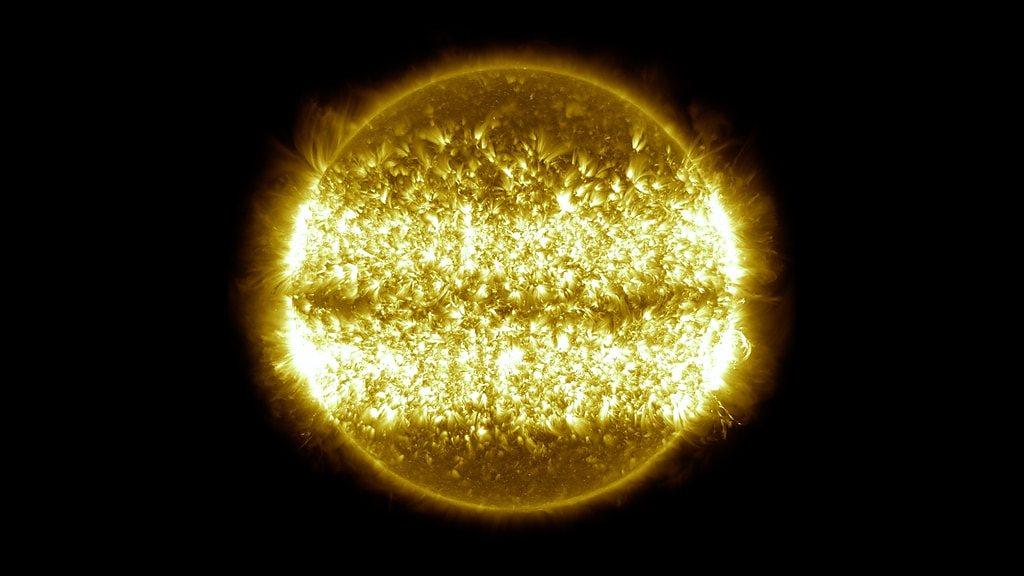James Webb Telescope: Clues on how first stars were formed
- Published
- comments
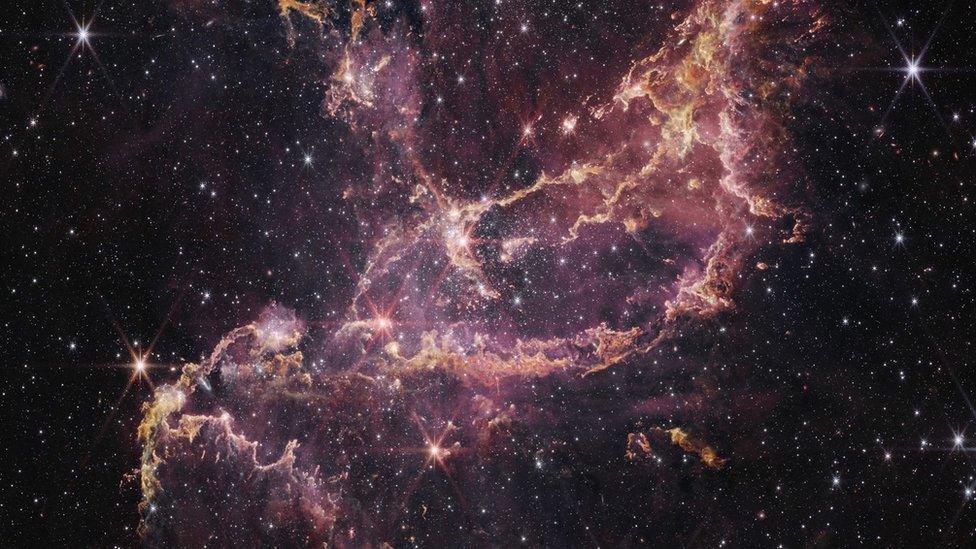
A new image from the James Webb Space Telescope has revealed more about how the stars in the early universe were formed more than 10 billion years ago.
The image shows a young cluster of stars called NGC 346, which are more than 200,000 light-years from Earth.
Located in the Small Magellanic Cloud - a dwarf galaxy near the Milky Way - NGC 346 is interesting to astronomers because it is similar to the conditions of the early universe when lots of stars were first formed.
A dwarf galaxy is a small galaxy with 1000 up to several billion stars, compared to the Milky Way's 200-400 billion stars.
Astronomers believe studying this region could help explain how the first stars formed during an event known as the "cosmic noon".
The cosmic noon happened only two or three billion years after the Big Bang and involved the formation of stars and their galaxies. After that, these galaxies stopped forming new stars.
Guido De Marchi, of the European Space Agency, and a co-investigator on the research team, said: "We're seeing the building blocks, not only of stars but also potentially of planets.
"And since the Small Magellanic Cloud has a similar environment to galaxies during cosmic noon, it's possible that rocky planets could have formed earlier in the Universe than we might have thought."
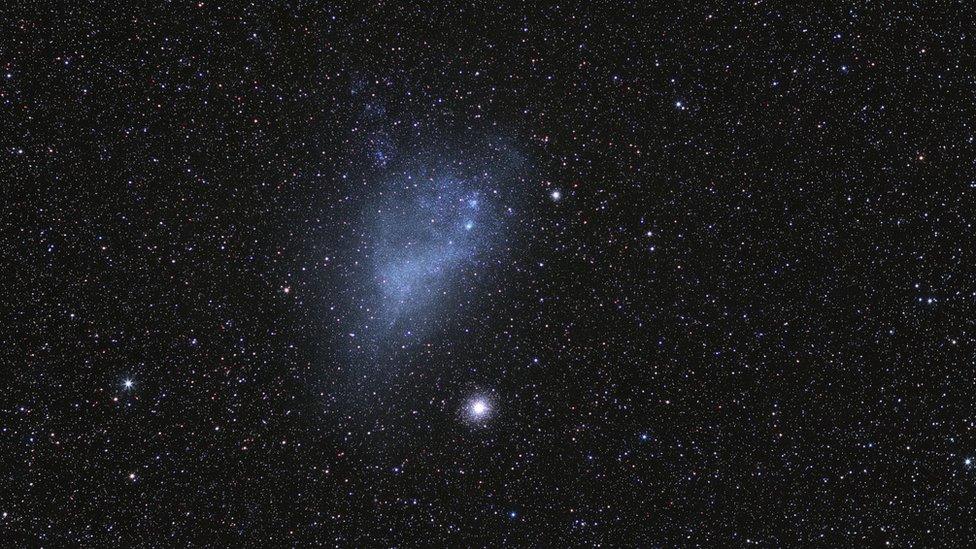
Small Magellanic Cloud - a dwarf galaxy near the Milky Way - has conditions similar to the early universe
The NGC 346 cluster of stars also contains protostars - clouds of gas and dust in space that are developing into stars.
Astronomers say studying protostars is the best way to understand how stars formed.
As young stars form, there is a disk of gas and dust around the protostar which collide and stick together eventually forming planets like the ones in our own solar system.
Dr. Olivia Jones from the UK Astronomy Centre at the Royal Observatory Edinburgh says such clear images of protostars from the James Webb telescope are very helpful for research.
"This means we have far more data to study at high resolution, offering us new information on how the birth of stars shapes their environment and even greater insight into the star formation process," she said.
- Published28 December 2021
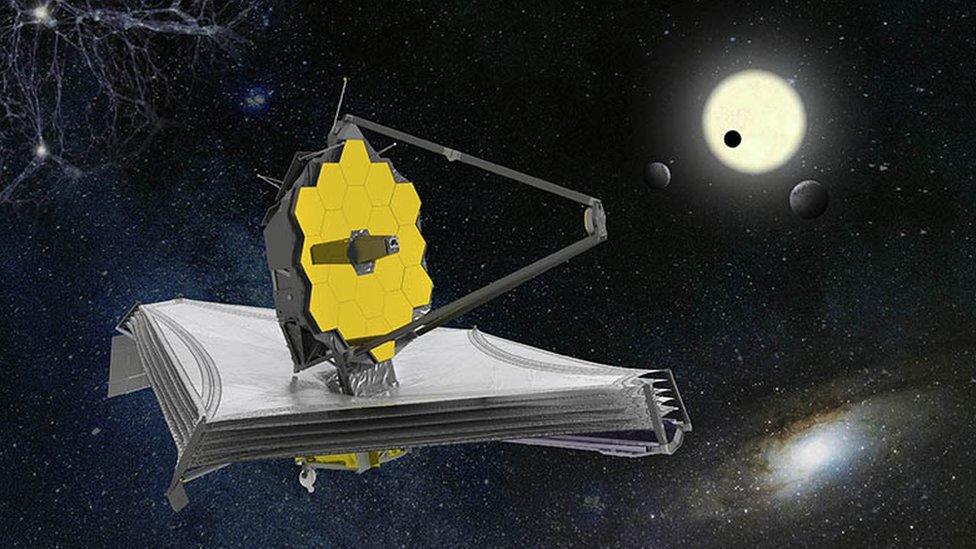
- Published13 April 2023
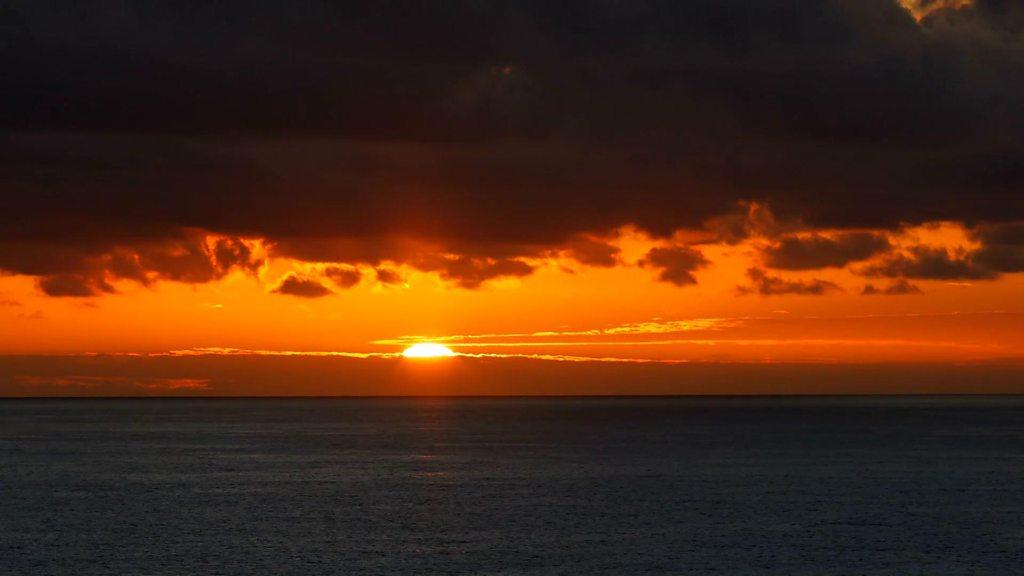
- Published28 June 2020
